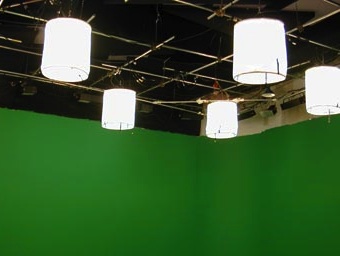
“The penumbra is becoming so large that it is overtaking the umbra.

“You’ll also notice that as the source gets softer, the length of the shadow is reduced,” offers Williams. With the former, the various shapes help to clearly illustrate the umbra and penumbra created by each of the various diffusion materials - the larger the penumbra, the larger the shadow edge transfer and the softer the light source.
#Diffusion screen lights behind series
To conduct our experiment, Williams and I set up two different tests: one with a series of three-dimensional geometric shapes placed on a grid pattern, the other with a mannequin head surrounded by black. Hard light has a very small penumbra or none at all soft light has a very large penumbra, with little or no umbra. The penumbra is the secondary portion of the shadow, the “fuzzy” perimeter created by oblique rays of light coming around the edges of the subject. If your light source is a point source from a distance, and there’s nothing nearby to scatter and fill in that light, then your shadow will be pure umbra, sharp and well-defined. The umbra of a shadow is the deep, dark center of it. It’s actually made up of two components: the umbra and the penumbra (see diagram above). The more defined that light source is to your eye, the less softening effect that diffusion will have on the source, and the harder the overall light will be. This can be clearly seen if you look at the diffusion itself to see the light source shining behind it. The larger that source is, relative to the subject, the softer the light will be.Īssuming all diffusion filters are the same size, the same distance from the subject, and the same distance from the source, then the more opaque the material, the more it will diffuse the light, creating a softer source.

The same is true when we bounce light into something the material we’re bouncing into becomes the new source for our subject. That’s an important point: When we put diffusion in front of a light source, the diffusion effectively becomes the new light source. When clouds cover the sky, they become the new apparent light source, and the size of the source increases from a small sphere - the distant sun - to the entire visible sky itself. While the sun is a huge light source, it’s also roughly 93 million miles away from us on Earth as a result of that distance, it’s a very hard source of light that creates very sharp, well-defined shadows. The softness of light is primarily determined by the size of the source relative to the source’s distance from the subject. A completely overcast sky, on the other hand, is the ultimate soft light in this instance, nearly all shadows are eliminated, and the transfer from light to shadow is extremely long and gradual - and almost indiscernible. A sharp, well-defined transfer value indicates a hard light. The softer the source, the larger this area of transition will be.

The first is the shadow edge transfer, where light transitions to shadow on a subject. In order to discuss the effects of these filters, we need to define the attributes that we’ll be examining. The primary job of a lighting-diffusion filter is to break up direct, hard rays of light from a source and scatter them to create a softer source. There’s nothing wrong with that approach, but in an effort to clarify this diffusion confusion, I teamed up with cinematographer Kaity Williams to test a number of regularly used diffusions and see what their exact effects really are. In many cases, they have experience with one particular “flavor” of diffusion, and they opt to stick with it throughout their career.

Understanding the differences between them - and knowing when to choose one over another - has perplexed many cinematographers and gaffers over the years. Manufacturers including Lee Filters, Gam Products and Gam’s parent company Rosco create and sell a wide variety of these kinds of filters. Diffusion filters - also referred to as “gels” - are the most common tools for altering the quality of light sources.


 0 kommentar(er)
0 kommentar(er)
